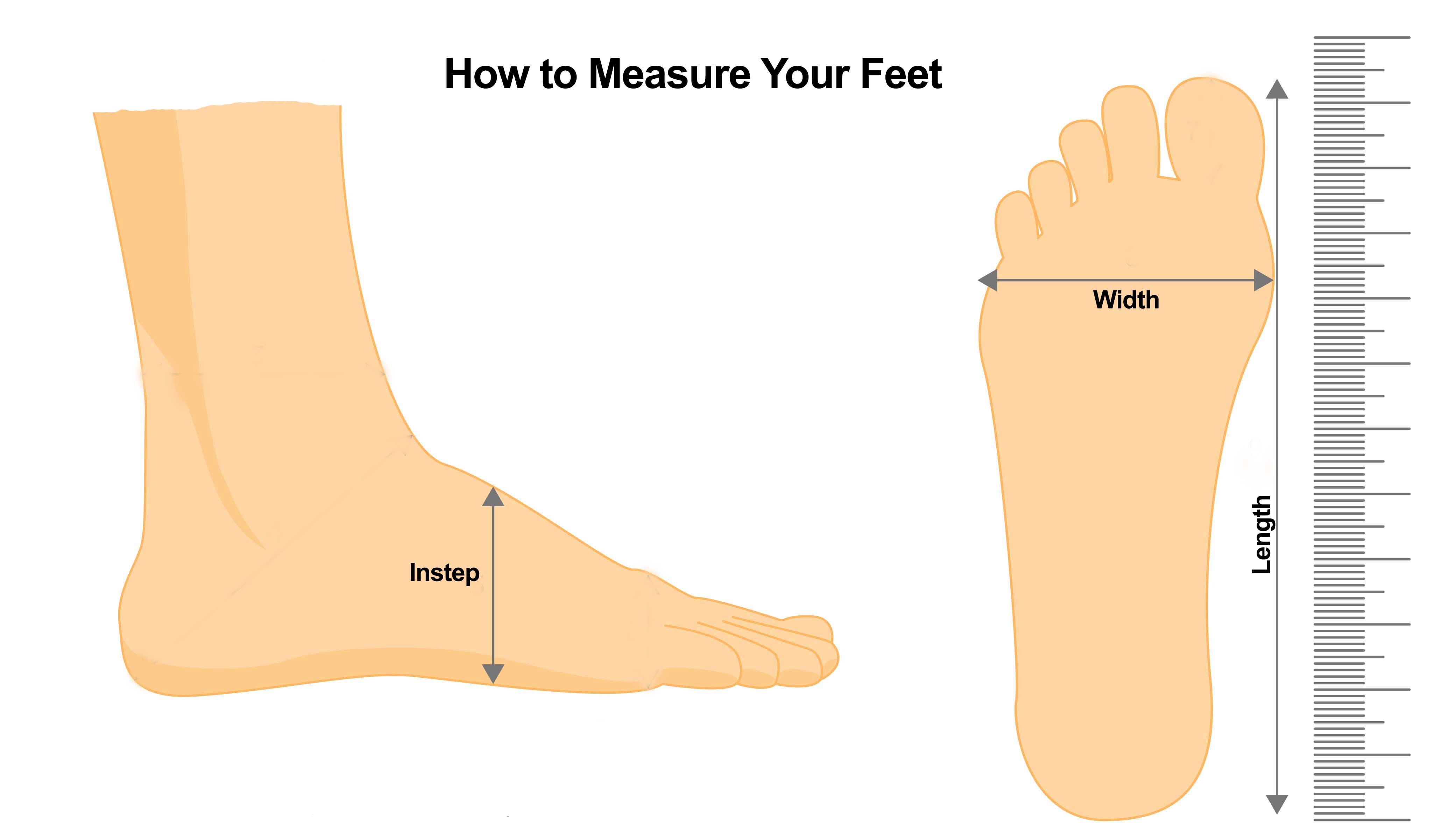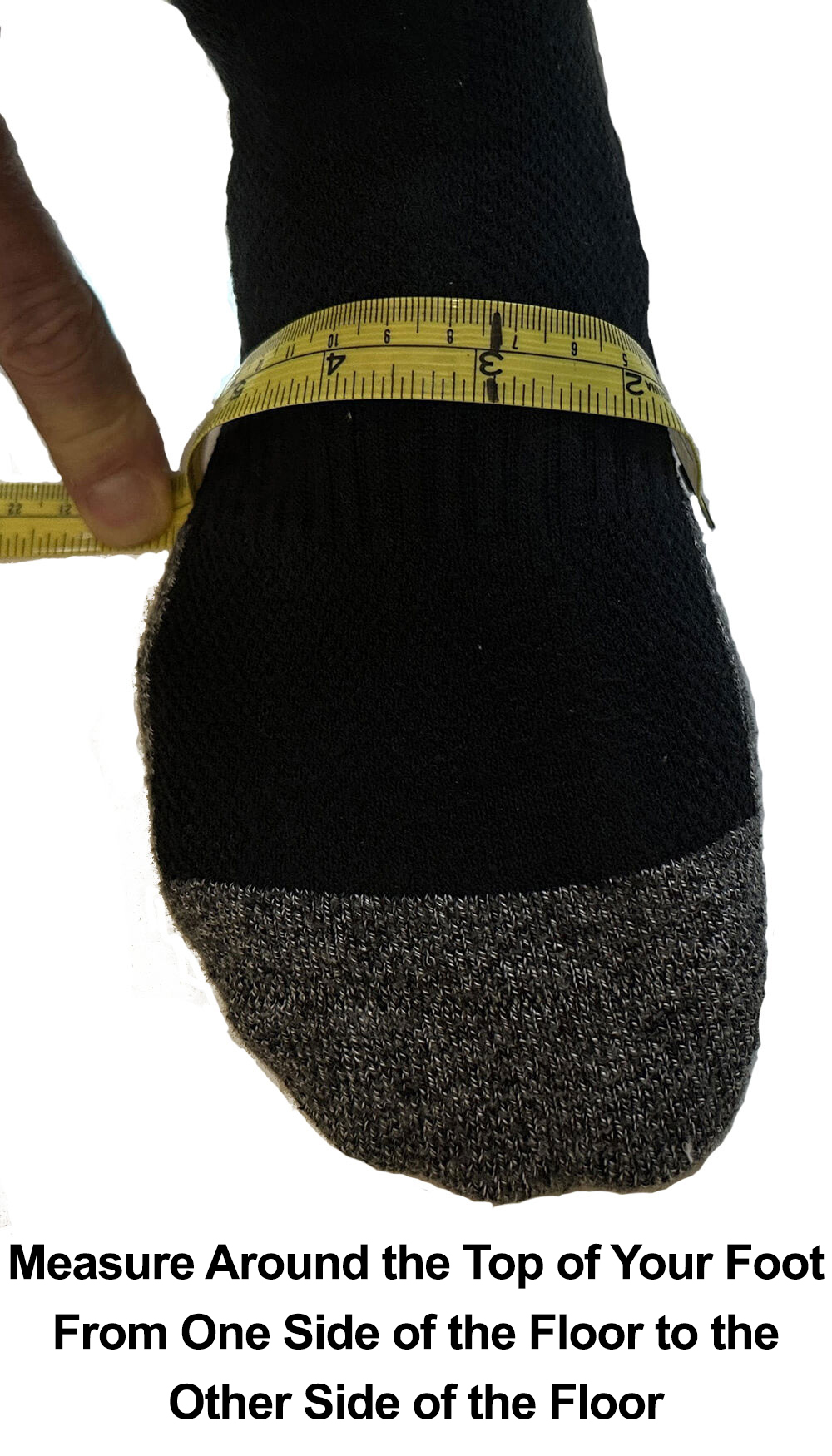Getting the Perfect Fit - Length, Width & Volume
You have probably experienced trying on several shoes that are the same size and they all fit differently.
The most misunderstood measurements is the width & depth of shoes (volume). Although shoe manufacturers try to standardize sizes and widths, due to several components of a shoe
there may be significant differences from one Brand to another or within the same Brand.
One of the biggest advances in shoes over the last few years have been the introduction of multiple widths for each size. Since our feet come in different sizes & widths, the shoes now accommodate both of these factors. In order to have a comfortable fit, the manufacturers have found that the width of a shoe is as important as the length.
Our feet also vary in their "girth" or the thickness. This is due to the size of the Arch and the area around our Instep. To accommodate different feet girth, some shoes today are available in Standard, Extra, Double and Supra Depth. These variations impact the amount of room inside the shoe, referred to as the Volume. In order to achieve the Perfect Fit, it's essential to measure the foot Length, Width & Instep (Volume).
Trying to put a wide foot into a medium shoe is like putting a square peg in a round hole - it simply doesn't fit. The same applies to the amount of space needed inside the shoe. For people who need to wear a Brace, the shoe needs to have enough room inside the shoe to allow for the Brace. When measuring for a foot wearing a Brace it's essential to measure the foot with the brace on.
When trying to find the perfect fitting shoe, you need to consider various factors such as shoe history, foot shape, arch type, foot size, foot width, and the intended use of the shoe. Once you have measured your feet as indicated below, contact our Personal Fitting Specialists and they will help match the right shoe with your foot measurements. Our Personal Fitting Specialists are well-versed in foot conditions and our shoe brands and would be happy to help you find the perfect fit.
Other Considerations
When trying to determine the right shoe based upon the measurements there are other factors to consider:
- What foot issues does the shoe need to accommodate; bunions, hammertoes, swelling; mild to severe, lymphedema?
- Do you have custom insoles or AFO (ankle foot orthotic / drop foot brace) that needs to fit inside the shoes?
- Any other foot issues; surgery or accident resulting in foot issues like a fused ankle?
- What type of shoe(s) are you looking for; Athletic, Casual, Boot, Work- Safety Toe, Heels?
- What are you currently wearing? Any shoe details for fitting reference like the Brand; shoe size, width, closure (lace, straps, slip-on), and type (athletic, casual, boot)
 Standard Widths of Shoes
Standard Widths of Shoes
Men's Widths:
- Narrow (B)
- Medium (D)
- Wide (2E or 3E)
- X-Wide (4E or 5E)
- XX-Wide (6E)
- XXX-Wide (9E, 10E, 14E)
Women's Widths:
- Narrow (A)
- Medium (B)
- Wide (D)
- X-Wide (2E or 3E)
- XX-Wide (4E or 5E)
- XXX-Wide (7E, 9E, 10E)
How to Measure Your Foot Length, Width & Volume
To get an accurate measurement in INCHES, sit with your knees at 90 degree angle, leaning forward to measure foot or stand on a hard surface. Draw an outline of each foot. Measure your foot while wearing the socks and/or AFO you plan to wear with the shoe.
- Length: Measure from Heel to Longest Toe
Right Foot __________ Left Foot __________
- Width: Measure the Widest part of your Foot below your Toes
Right Foot __________ Left Foot __________

- Instep (Volume): Measure the Midfoot from one side of the floor to the other side. You're measuring the space needed inside the shoe.
Right Foot __________ Left Foot __________
Contact ICS Personal Fitting Specialists (877) 553-5544, to convert your measurements. The Fitting Specialists will use these measurments as a guidline and will work closely with you taking into consideration all of the factors you have provided.
Factors that Affect "The Fit"
There are several other factors that affect how a shoe actually fits on your foot. These include the; (1) Platform or Footbed, (2) Design & Structure of the Toe Box, (3) Upper Material type (leather, lycra, mesh, or knit), (4) Volume (space inside the shoe), and (5) Sole of the shoe. All of these factors can result in a very different fit for the same size and width shoe.
The best way to tell if you have the correct fit is - How the shoe feels when you put it on. It should feel comfortable in the Width, Length, and provide ample Volume (Space inside the shoe). Most shoes should be comfortable right out of the box. The edges of your foot should meet and align flush with the edges of the footbed. The heel should sit snugly in the heel cup (not slip) and the general feel without lacing up should be comfortable without being restrictive.
All of the factors above should be considered when selecting a shoe. The more you understand the dimensions and condition of your feet, the easier it will be to find what shoe works best for you.
ICS offers Free Consultations with our Personal Fitting Specialists. The ICS Specialists have helped hundreds of people find the Perfect Fitting Shoes for their needs. They have in-depth knowledge of foot conditions and will provide recommendations of the best shoes for your needs and lifestyle.

ICS Shoe Personal Fitting Specialists can help you find the Perfect Fitting Shoe to eliminate pain and discomfort. Taking care of your feet every day starts with the perfect fitting shoe.
Let us help you find just the right shoe for your lifestyle. Contact Your Personal Fitting Specialist Today - Your Feet Will Thank You!
(877) 553-5544 or
Contact Us by eMail.